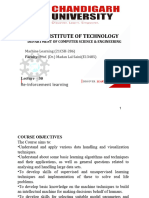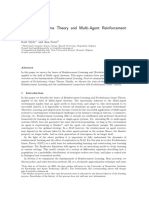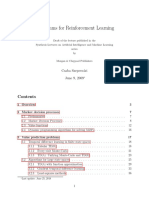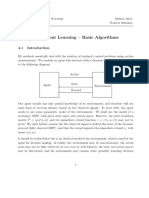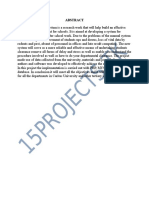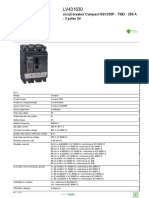0% found this document useful (0 votes)
31 views50 pagesLecture 12 Slides - After
Reinforcement learning is a type of machine learning where an agent learns to map situations to actions to maximize a reward signal. It involves concepts such as Markov decision processes, policies, and various approaches like policy gradient methods. The field has applications in robotics, autonomous driving, and power grid control, but also faces challenges like sample inefficiency and lack of safety guarantees.
Uploaded by
baptiste.ferrer10Copyright
© © All Rights Reserved
We take content rights seriously. If you suspect this is your content, claim it here.
Available Formats
Download as PDF, TXT or read online on Scribd
0% found this document useful (0 votes)
31 views50 pagesLecture 12 Slides - After
Reinforcement learning is a type of machine learning where an agent learns to map situations to actions to maximize a reward signal. It involves concepts such as Markov decision processes, policies, and various approaches like policy gradient methods. The field has applications in robotics, autonomous driving, and power grid control, but also faces challenges like sample inefficiency and lack of safety guarantees.
Uploaded by
baptiste.ferrer10Copyright
© © All Rights Reserved
We take content rights seriously. If you suspect this is your content, claim it here.
Available Formats
Download as PDF, TXT or read online on Scribd
/ 50

















